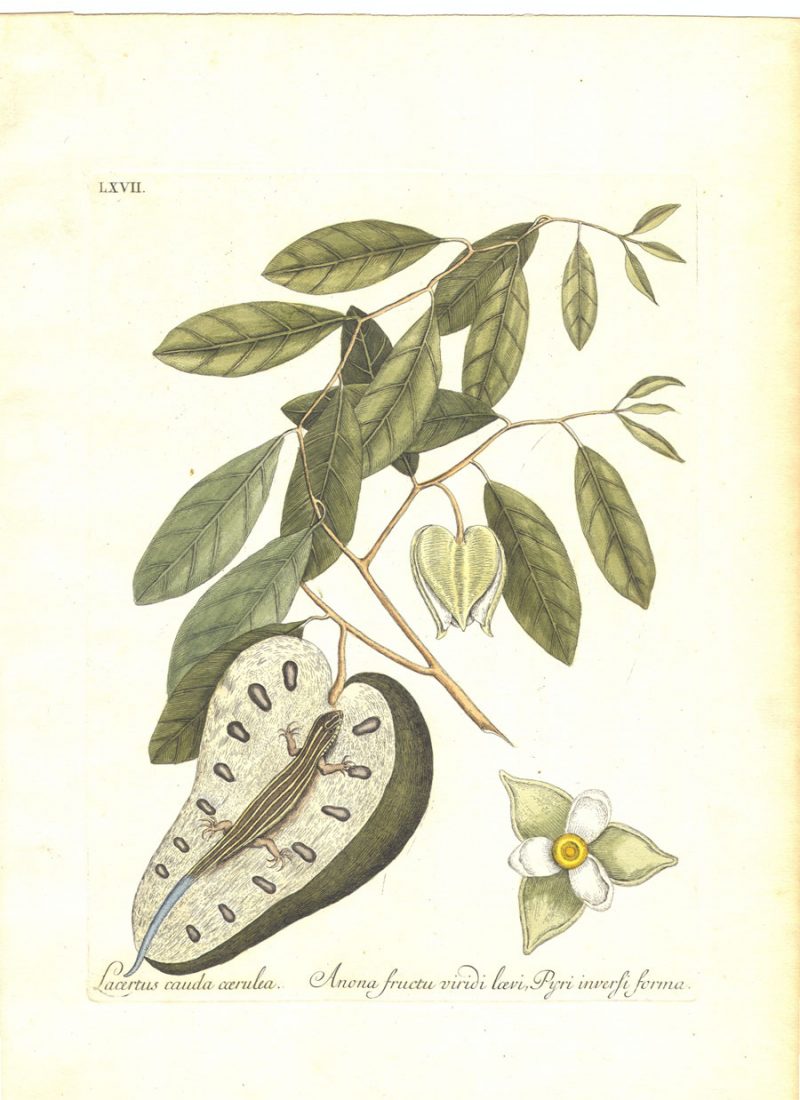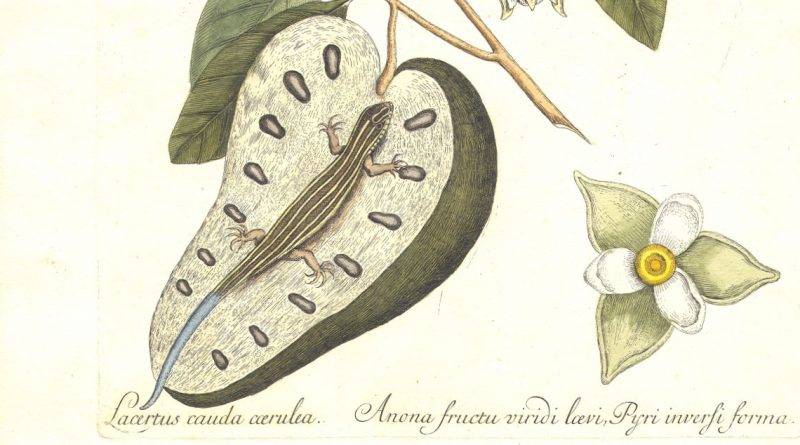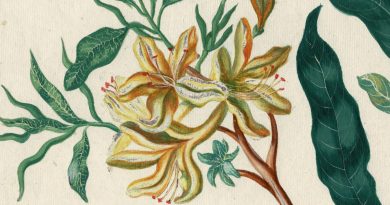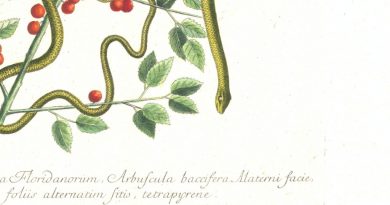Mark Catesby – Lacertus Cauda Caerulia – Plate LXVII – The Guana
Lacertus Indicus – The Guana – 18th Century Copperlate Engraving Original Hand-coloring
Catesby described the Lizard thus: “This kind of Lizard somewhat resembles the Crocodile or Alligator in shape, but has a shorter Head, and a serrated Crest on the Ridge of the Back, extending from behind its Head to the middle of the Tail. They are of various Sizes, from two to five Feet in Length, their Mouths are furnished with exceeding small Teeth, but their jaws are armed with a bony Beak, with which they bite with great Strength.”
and
“When they swim they use not their Feet, but clap them close to their Body, and guide themselves with their Tails: They swallow all they eat whole. They cannot run fast, their Holes being a greater Security to them than their Heels. They are so impatient of Cold, that they rarely appear out of their Holes, but when the Sun shines.”
1747
March, 24, 1683 (Castle Hedingham, Essex) – December 23, 1749 (London)
Sizes vary slightly, but each measures around 39 X 54 cm
These extraordinary engravings come from the first published account of the wildlife of North America which was published in the middle of the 18th Century –before the American revolution –by the pioneering British natural historian Mark Catesby.
Mark Catesby was born in Essex, England on April 3, 1683. He studied Natural History in London, but in 1712 he took up the opportunity to visit the American colonies after his sister married Dr. William Cocke of Williamsburg, Virginia. Catesby spent the next seven years in Virginia, observing and sketching the local flora and fauna. It took some 20 years for the artist and naturalist to put together the two-hundred and twenty images which would comprise the final version of The Natural History of Florida, Carolina and the Bahama Islands (1747). All of the images in the book were both drawn and engraved by Catesby’s own hand.
Reference: University of Virginia On-Line Version of Catesby’s Natural History




